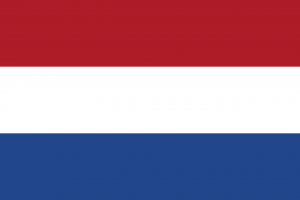Difference between revisions of "Language/Dutch/Grammar/Plurals"
m (Quick edit) |
m (Quick edit) |
||
| Line 45: | Line 45: | ||
<br><hr>If you have any questions, please ask them in the comments section below.<br>Feel free to edit this wiki page if you think it can be improved. 😎 | <br><hr>If you have any questions, please ask them in the comments section below.<br>Feel free to edit this wiki page if you think it can be improved. 😎 | ||
==Videos== | |||
===Learn Dutch Grammar _ Master Important Rules for Plural Nouns ...=== | |||
<youtube>https://www.youtube.com/watch?v=Pa7m2D1HvDc</youtube> | |||
===The plural in Dutch for nouns - YouTube=== | |||
<youtube>https://www.youtube.com/watch?v=2tbmvx3aUvc</youtube> | |||
===Learn Dutch - Plural - YouTube=== | |||
<youtube>https://www.youtube.com/watch?v=WehGJITv4yo</youtube> | |||
{{Dutch-Page-Bottom}} | {{Dutch-Page-Bottom}} | ||
Revision as of 16:06, 22 February 2023
Learning Dutch grammar can be a daunting task, but understanding plurals is a great place to start. Plurals are an essential part of the Dutch language and are used to indicate when more than one of something is being referred to. In this lesson, we'll explore the basics of Dutch plurals and how to use them correctly.
What are Plurals?
Plurals are words that refer to more than one of something. For example, if you wanted to talk about two cats, you would use the plural form of the word "cat" - "cats". Plurals are used in many languages, including Dutch.
In Dutch, plurals are formed by adding a suffix to the end of the word. The suffixes used depend on the type of word being used. For example, nouns have different suffixes than adjectives.
Nouns
Nouns are words that refer to people, places, things, or ideas. In Dutch, nouns are made plural by adding a suffix to the end of the word. The most common suffixes are "-en", "-s", and "-en".
For example, the singular form of the word "boom" (tree) is "boom", and the plural form is "bomen". Similarly, the singular form of the word "huis" (house) is "huis", and the plural form is "huizen".
It's important to note that some nouns don't change when they are made plural. For example, the word "kind" (child) is the same in both the singular and plural forms.
Adjectives
Adjectives are words that describe nouns. In Dutch, adjectives are made plural by adding a suffix to the end of the word. The most common suffixes are "-e" and "-en".
For example, the singular form of the word "groot" (big) is "groot", and the plural form is "grote". Similarly, the singular form of the word "mooi" (beautiful) is "mooi", and the plural form is "mooie".
It's important to note that some adjectives don't change when they are made plural. For example, the word "goed" (good) is the same in both the singular and plural forms.
Verbs
Verbs are words that describe actions. In Dutch, verbs are made plural by adding a suffix to the end of the word. The most common suffixes are "-en" and "-s".
For example, the singular form of the word "lopen" (to walk) is "lopen", and the plural form is "lopen". Similarly, the singular form of the word "zwemmen" (to swim) is "zwemmen", and the plural form is "zwemmen".
It's important to note that some verbs don't change when they are made plural. For example, the word "zijn" (to be) is the same in both the singular and plural forms.
Conclusion
Understanding plurals is an important part of learning Dutch grammar. By understanding the rules for forming plurals, you can communicate more effectively in Dutch.
If you're looking for more help with your Dutch language skills, why not join the Polyglot Club community Polyglot Club? Our friendly and knowledgeable members are always happy to help.
If you have any questions, please ask them in the comments section below.
Feel free to edit this wiki page if you think it can be improved. 😎
Videos
Learn Dutch Grammar _ Master Important Rules for Plural Nouns ...
The plural in Dutch for nouns - YouTube
Learn Dutch - Plural - YouTube
